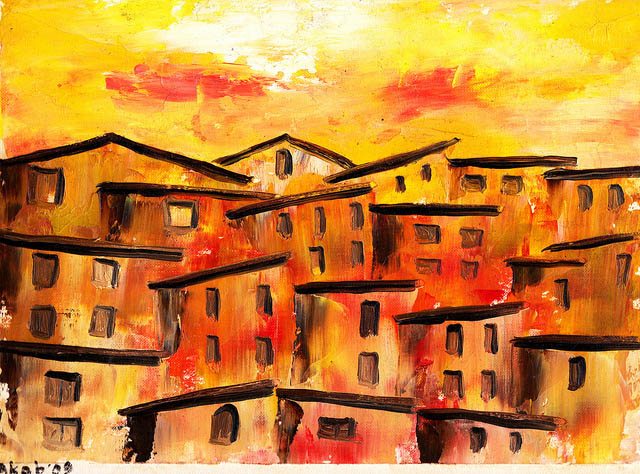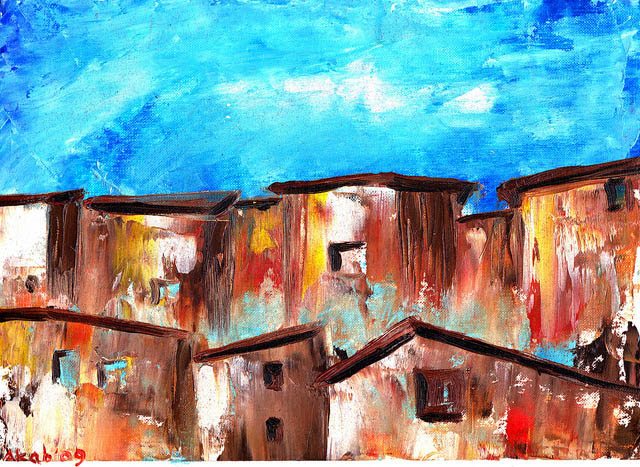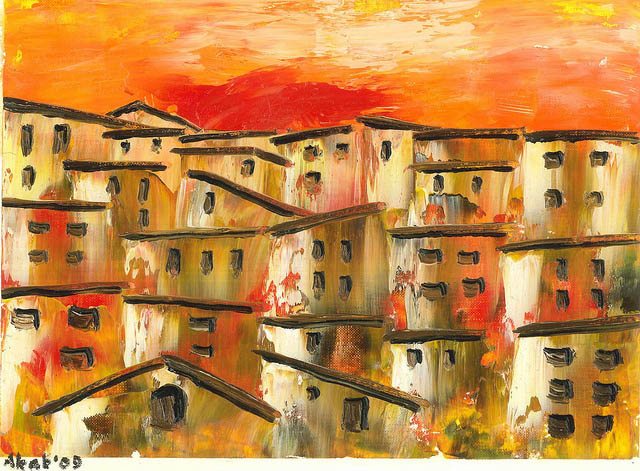
New Roles in the Indian-American Family
An increasing number of young adults will be taking care of elderly parents in the next few years – and that is not going to be a simple process. Where will the senior members in the family live? Do they move in with the children? If the children have transferable jobs, what happens? Do they uproot themselves and start all over again, adjusting to a new climate, a new environment? Will the daughter-in-law/son in-law cope with long term illness?
Some parents insist on staying with the son. What happens to the wife’s parents? What if they do not have a son and wish to stay with the daughter? Is it possible for everyone to stay together? How do you take care of sick parents when you have a job and children? Aging – no matter how beautifully you age – can be fraught with frustration, bitterness, anger and resentment.
A possible solution to this may be investing in a gated Indian-American community, like a cottage retirement center. Indian American professionals on the brink of retirement are already planning these projects; this may come with a swimming pool, a club room, tennis courts, a shopping center, a pharmacy and a place of worship. There are choices offering flexibility of care and service.
Older people often like to stay on their own in a safe and supporting community. However, this may be an expensive project and many people will not be able to afford it. An Indian told me very honestly that she could not envisage living only with Indians and singing bhajans. She said she came to America to live in a diverse community. This idea of communal living was unappealing to her.
Another option. Retirement homes are becoming popular and a boon to those who wish to improve the quality of life as they grow older. There are homes to suit different budgets. One such is the Housing Urban Development Program run by the Federal Government. The rent is calculated as a percentage of your income, (30% ) although it may vary from state to state. There are different eligibility requirements, but there are long waiting lists.

The World of Retirement Homes…
My work in California involved qualifying seniors for subsidized housing, the HUD program. It was in the process of interviewing applicants and families that I was startled to find that aging was fraught with heartrending problems.
Here was this 62-year-old Indian-American widow sobbing her heart out and pleading for accommodation. Her story was that she was being treated cruelly by the daughter-in-law and wished to live independently. She complained that she was never taken out on the weekends, the grandchildren barely spoke to her and when she was ill, she was terrified to tell her son.
Her daughter-in-law resented her presence, and thought she was not doing her fair share of work in household duties. The daughter-in-law also wanted her own parents to stay with her. She also had a different story to tell, of a possibly domineering mother-in-law who was always finding fault, being possessive about her son, demanding a particular diet or frowning on late night parties. The truth is somewhere in between. Meanwhile, the lady needed counseling and help.
There were many such stories. Indian-American couples wanted to live independently but since they received assistance from the Government around $ 1000, their children took the money and insisted the parents/in-laws live with them. Oprah visiting the widows in northern India comes to mind. When Oprah asked if the children ever visited, she was told they did arrive once a month to collect the widowed mother’s pension!

Aging Parents, New Life Stories…
Here in America, even some well-to-do children find the extra money helpful and keep parents in the home, using them as baby sitters and to do a number of household tasks. Many grandparents relish the role but there are an equal number of people who want to relax in their old age, travel a little, enjoy the company of other seniors and not monitor the babies, cook, and sit in front of the TV. Some Indian seniors have told me that “It is a traditional Indian thing to stay with children. What will our relatives back in India think if we live in a retirement home?”
This couple came to me with their daughter who sincerely wanted them to live with her family. But the couple was adamant. They cherished their independence, needed privacy and did not want to live in a son-in-law’s home. Unfortunately, they had tried to live with the son, but his wife resented their presence and there were bitter fights. So they left that home and were seeking housing. All went well and they moved into a housing facility.
A few months later, the man fell down and broke his hip. His wife did not drive so the daughter had to take time off from work and not only take him up and down to the hospital but prepare food and bring it over. A month later the man needed surgery and there was an endless round of hospital visits, caring, transporting. The daughter wished they lived in her home which might have been more convenient, but they declined. The daughter called her life a living nightmare. Her brother could not help as he lived in Santa Barbara and she was in Los Angeles.
Some couples do exploit the system and insist they do not have any bank accounts to take advantage of the government largess. And yet the sons and daughters appear quite wealthy and have top professional jobs. Perhaps the parents have willed away their assets voluntarily or were pressured to do so. One never knows but despite the distressing scenarios, there are also many Indian-Americans who cherish their parents, honor and respect them, and remember with gratitude the sacrifices of the parents. They look after them with great care, whether they stay with them or elsewhere.
Tips For Starting Over
Some suggestions for those who find themselves isolated and abandoned: Try to find a Day Care Center; there are over 2000 of them in the country sponsored by the Government. Transport is provided. Here you will meet seniors, play board-games, cards, listen to music, watch dance performances, read books, or join a discussion group. And you even get a well-balanced meal. There is free counseling and even therapy.
If you are active you can volunteer at the local school, library, hospital, museum or place of worship. This may be a problem for those who cannot drive or do not have a car. Some cities have Senior Gatherings once a month where a light meal is provided; people meet and listen to a talk on health, or issues pertaining to aging. This happens on a Saturday so some member of the family can do the drop off and the pickup. My friend Urmila Mukherjee has been getting a group together for over 15 years. They come from all regions of India and at any meeting you can hear a dozen languages. She recently took them on a cruise to Ensenada from Los Angeles, and another trip to Hawaii is in the works.
If you can drive seniors or carpool you can attend classes at the community college. Try Taichi, yoga, listen to a lecture on astronomy or world events. You can enroll for craft classes. Most classes are free. Or mentor a young student or tutor. Start a cookery class. Learn the computer. Browse websites that kindle your interest or passion. Offer to speak on India in your grand-children’s school.
At the age of 80, my friend Prativadi Narasimhan acts in plays, travels 200 miles to do a HariKatha performance, has appeared in various commercials and even does a stint on the Jimmy Kimmel show. He rocks. So can you!
By embracing new roles, parents and children can reinvent the Indian-American family.
(Prem Kishore is a writer at large, passionate about audio work, reading for the blind, and has authored India : A Culinary Journey (Hippocrene) to be published shortly.)

8 Comments
Life is a journey and when you are not in the driver’s seat, sit back and enjoy the view!
Easier said than done. What we have to do is prepare for old age. Financial planning is essential. Be vigilant about health, cultivate alternate interests and refuse to accept that you are a victim. Add life to your years and this can happen if family and support systems turn your retirement into a period of rest, tranquility and contentment.
Very interesting read….reminds us how life as we know today will not/may not be the same when we get older. The people in the driving seat soon become passengers again.
Paul
The negative traditions of bigotry and fatalism are certainly to be shunned when you begin a new life in a new country.What should remain is the natural Indian warmth, vibrancy, curiosity, diligence, focus, determination and survival skills that we Indians nurture through the ages.
Sadly,Laav, Indian/South Asian Americans are a little wary of single, or divorced parents or divorced parents with kids. Perhaps they feel their family structure threatened. In India one may be surrounded by taboos and prejudices but here in America where you have the freedom to reinvent yourself, it is distressing to find so much indifference towards those who do not fit into the ideal family pattern. This has to change.
Hi Lavina and Prem –
I am glad you brought this issue to light. Another thing I am seeing in the Indian American and larger South Asian American community is changing social and family structures. Most Indian/South Asian American cultural and religious organizations are created on the model that family means husband, wife, and kids and that everyone is married with good jobs, a house and material comforts.
The reality in 2012 is that more and more of us are single, divorced, divorced with kids and single parents. A lot of us do not have access to all the opportunities and resources America has to offer. There are no culturally sensitive or culturally specific organizations or social support structures for those of us who do not fit the so called Indian/South Asian American mold. I would love to see someone or a group of people who would address this growing trend and need in our community.
Laav
Hi Paul, thanks for your thoughtful comment. Would be interesting to hear how
you are coping with your cross-border family connections!
Via Facebook
Terrific story, Lavina. So many interesting points and suggestions. I’m particularly intrigued by the carrying over of traditions (the good and the bad ) from India to the U.S. and how they may or may not be assimilated. My own story is oddly inverted, as I struggle to have a life with my chosen family in India and still address my responsibilities and desire to care for my aging father in the U.S.
Prem Kishore, thank you for bringing to light such an important issue!